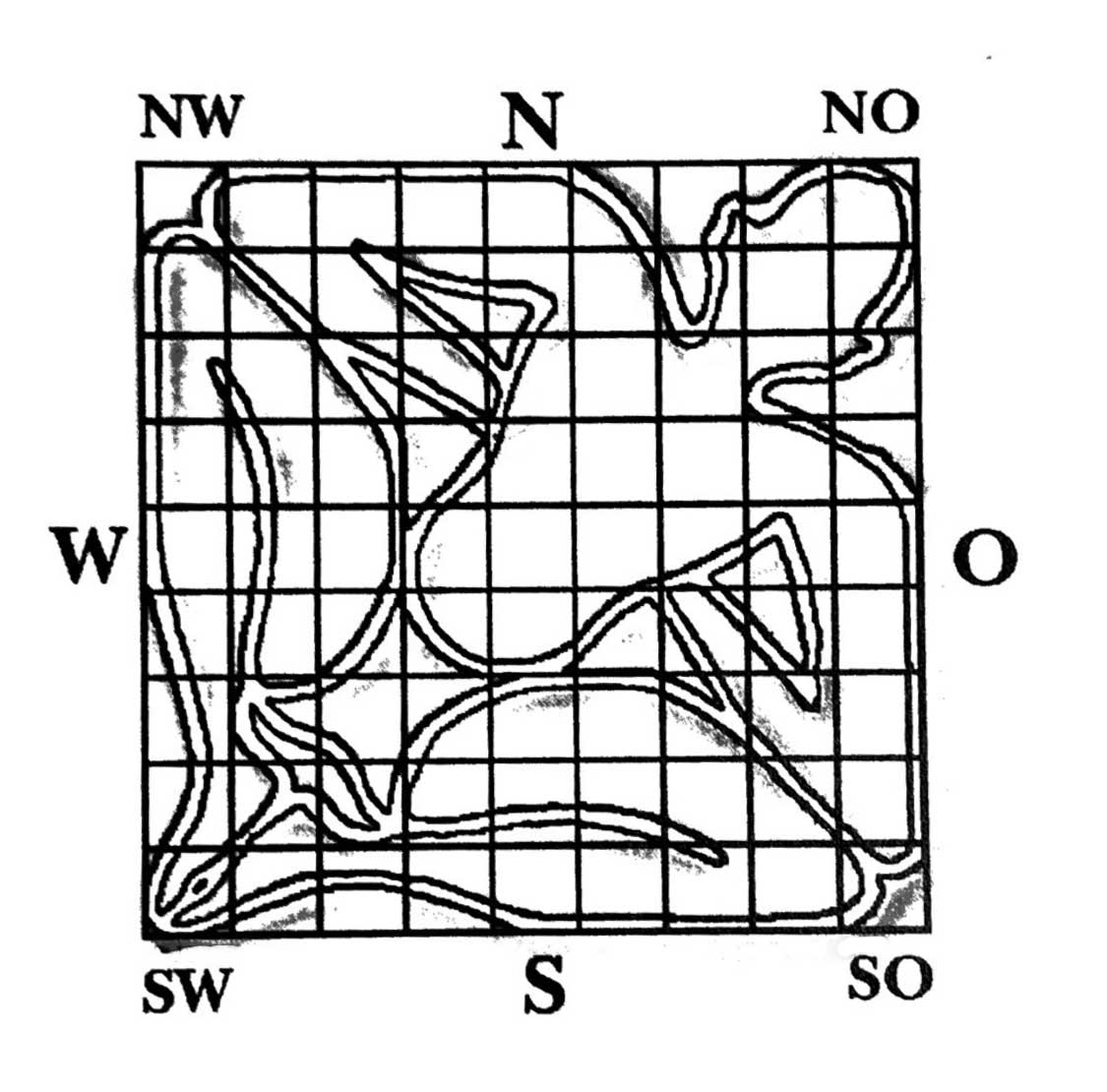
The Vastupurusha Mandala
The Vastupurusha Mandala is the geometric matrix upon which each limited space is situated. It represents the living cosmos manifested on earth in architecture.
Vastupurusha
Embodies the Living Consciousness of Space
The Vastupurusha Mandala has two main components: the square grid and the image of the Vastupurusha. The square symbolizes the archetype of both the manifest und unmanifest space. It also represents the immeasurable energetic potential of space. The archetypal square grid stands for the subtle energies of the cosmos in their perfect, never changing symmetry and balance.
Vastupurusha embodies the living consciousness of space. He is symmetric only along one mirror axis, and even this symmetry is broken by his inner anatomy. Moreover, the energies of his body parts have different qualities. In contrast to the homogenous distribution of energy inside the square grid, Vastupurusha’s energies are heterogenous. Therefore, Vastupurusha sets up the foundation for change and evolution in life. The fact that he represents consciousness in every organic and inorganic object as well as in all the manifested and non-manifested objects of the universe, illustrates clearly Vastupurusha’s active participation
in all life processes.
Vastupurusha, the Vedic demigod and chosen ruler over all the architectonic objects is depicted by the outline drawing in the Vastupurusha Mandala. He is lying flat on his belly, arms and legs bent to the side. He fits exactly into the square in such a way that his head and feet, as well as his elbows and knees are in the corners of the square.